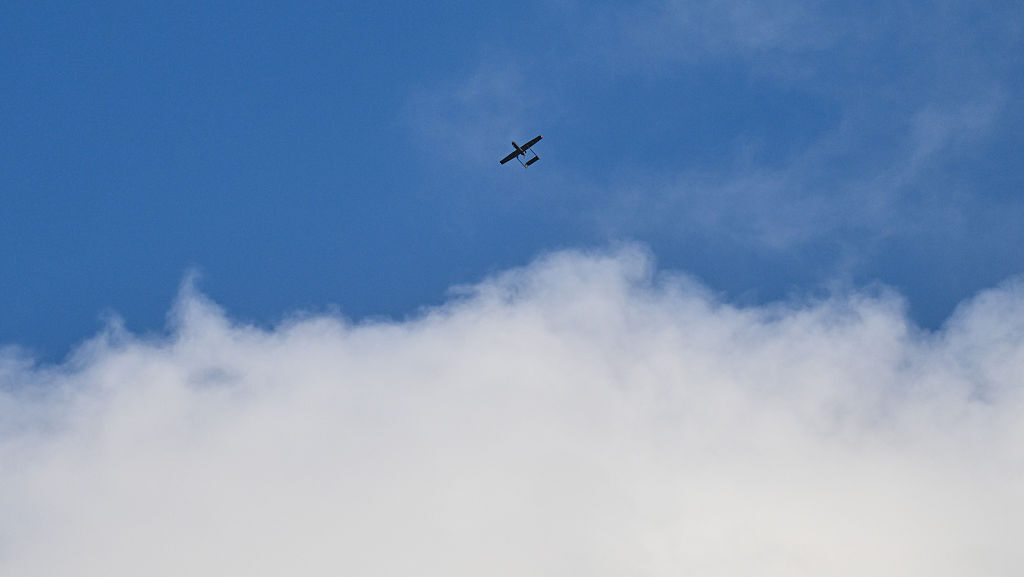European defense officials are prioritizing the development of a comprehensive “drone wall” to bolster security against increasing threats posed by drone incursions, particularly from Russia. At the Halifax International Security Forum, senior leaders emphasized that the first step is enhancing detection capabilities. Estonian Minister of Defence Hanno Pevkur highlighted that detecting low-flying threats, including drones and cruise missiles, remains a significant challenge.
Pevkur noted that Ukrainian forces currently struggle to intercept between 20 percent and 30 percent of incoming Russian drones, underscoring the urgency of improving detection methods. During discussions at the forum, which took place recently in Nova Scotia, both Gen. Onno Eichelsheim of the Netherlands and Adm. Giuseppe Cavo Dragone, Chair of the NATO Military Committee, echoed Pevkur’s concerns about the difficulty of identifying drones at low altitudes.
Eichelsheim explained that effective detection requires a multifaceted approach, incorporating various systems such as acoustic, passive, and radar technologies. He acknowledged that the low altitude of many drone threats complicates detection efforts, particularly when protecting vast areas. Pevkur called upon the defense industry to develop innovative solutions for tracking fast-moving weapons operating at heights between 100 to 200 meters (approximately 330 to 660 feet).
The need for enhanced detection capabilities is further complicated by budget constraints, especially during peacetime when military readiness may not be at its peak. “We face many challenges ahead,” Pevkur remarked. “Detection is the priority, followed by the need for more automated interceptors.” He emphasized the importance of visual confirmation in these operations, signaling a call to action for the defense sector to create the necessary equipment.
European Union’s Drone Defense Initiative
The escalating concern over drone incursions has prompted NATO countries to strengthen air defenses, particularly along the Eastern Flank. Recent incidents, such as the sighting of drones over the Netherlands’ Volkel air force base, have raised alarms, leading to air traffic suspensions in Eindhoven. In October, Dutch F-35 fighters were deployed to intercept suspected Russian drones in Polish airspace, highlighting the urgent need for an effective response to this relatively low-cost threat.
In response to these challenges, the European Union has initiated the “Drone Defence Initiative,” aiming to establish a fully operational drone wall by the end of 2027. This initiative aligns with the EU’s Defense Readiness Roadmap and is considered one of four flagship programs. According to European Commission documents, the initiative aims for a “360-degree approach,” integrating advanced technologies for detection, tracking, and neutralization of threats, as well as capabilities for precision strikes against ground targets.
Eichelsheim indicated that the initial architectural framework for the drone wall should be ready within months. He cautioned, however, that achieving complete protection will be impossible. “There will always be flaws in the system,” he stated. Nonetheless, he affirmed that the foundational capabilities required to implement this initiative are already available.
Balancing Defense and Civilian Airspace
While plans for the drone wall advance, both Pevkur and Eichelsheim emphasized the necessity of establishing clear guidelines for airspace management. Pevkur remarked on the complexities of distinguishing between peacetime and wartime protocols, noting that military forces cannot simply close airspace and engage every unidentified aircraft. “We cannot risk shooting down a small Cessna with civilians on board,” he cautioned.
Eichelsheim highlighted the importance of clearly defined rules of engagement, which must integrate military, police, and civilian aviation authorities. Establishing these connections is crucial for ensuring that those authorized to respond to drone threats possess the appropriate directives and authority.
As Europe navigates these challenges, the collaboration between defense officials and the defense industry remains essential. The development of effective detection and response systems will be critical in safeguarding European airspace from emerging drone threats.
